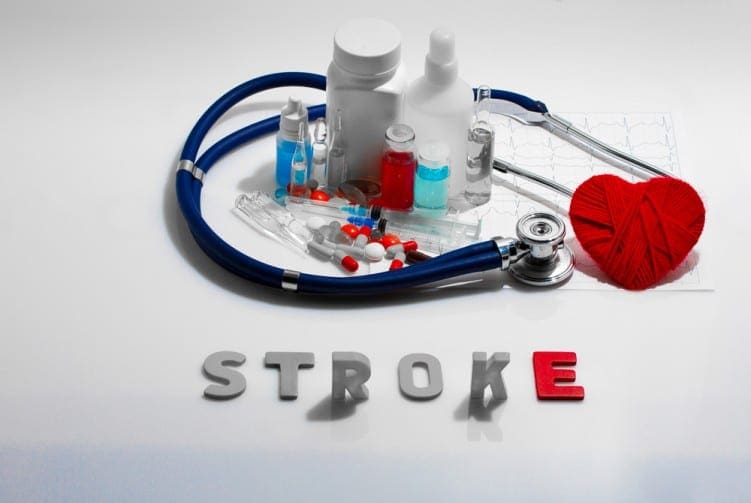
Understanding Cholesterol Levels: Why Knowing Your Numbers Could Save Your Life
What Exactly Is Cholesterol?
Cholesterol often gets a bad name — and not without reason. But this waxy, fat-like substance is also essential to life. Your body uses it to make hormones, vitamin D, and bile acids that digest food. The problem begins when cholesterol levels spiral out of balance — silently clogging arteries, fueling inflammation, and setting the stage for heart attacks and strokes.
This quiet build-up can go unnoticed for years — even decades — making high cholesterol one of the most dangerous “silent killers” in modern medicine.
Getting Checked: The Numbers That Matter
It’s never been easier to get your cholesterol tested. A simple blood test — either a pinprick or a full venous profile — can give you life-saving insights.
Here’s what doctors look for in the UK:
| Measurement | Target (mmol/L) | What It Means |
|---|---|---|
| Total cholesterol | ≤ 5 | Overall cholesterol in blood |
| LDL (“bad”) cholesterol | ≤ 3 | Too much leads to artery blockages |
| Non-HDL cholesterol | ≤ 4 | A better predictor of risk |
| Triglycerides | ≤ 2 (fasting), ≤ 4 (non-fasting) | Linked to obesity and metabolic disease |
Newer markers like ApoB and lipoprotein(a) [Lp(a)] can provide even deeper insight — especially if you’ve had heart problems in the family.
- Ask your GP for a full lipid profile if you’re over 40 – See our Checklist at the foot of this article – What to ask about your Cholesterol Levels
- You have high blood pressure, diabetes, or family history
- You’re already on cholesterol medication
- You want a proactive health check
Why These Numbers Matter More Than Ever
Cholesterol doesn’t hurt — until it does.
It doesn’t cause pain, fatigue, or visible symptoms. But over time, excess LDL and other harmful lipids can create dangerous plaques in your arteries, narrowing blood flow to your heart and brain.
This silent process can lead to:
- Heart attacks without warning
- Strokes that change lives in an instant
- Angina, breathlessness, and declining stamina
The sooner you know your numbers, the sooner you can act — and potentially reverse the damage.
The Power of Lifestyle
You don’t need to go on a crash diet or train for a marathon to change your cholesterol profile. In fact, small, sustainable changes often make the biggest impact:
- Eat like the Mediterranean: Fresh vegetables, whole grains, oily fish, olive oil, nuts, and legumes
- Move your body: 150 minutes/week of moderate activity
- Cut the culprits: Less red meat, processed foods, added sugars, full-fat dairy
- Don’t smoke. Get sleep. Tame stress
Which Foods Help our Cholesterol Levels?

There are a number of foods which can be included in your diet to boost levels of HDL cholesterol and lower LDL cholesterol levels:
- Oily fish such as tuna, salmon and sardines which contain Omega 3. Scientific studies have shown these to be useful in lowering cholesterol in the body.
- Oats or oatmeal contain a soluble fibre which can help bad cholesterol from being absorbed into your bloodstream.
- Barley and other wholegrains also contain soluble fibre to help lower LDL cholesterol levels
- Onions and garlic
- Olive Oil and other vegetable oils such as rapeseed, sunflower or canola oils.
- Walnuts, almonds and peanuts can lower LDL and protect the heart.
- Foods fortified with sterols and stanols such as yoghurts, spreads and drinks.
- Beans which are also rich in soluble fibre.
- Fruits rich in pectin such as apples, grapes, strawberries and citrus fruits.
To understand more about the different types of fats and the dietary sources of “healthy” fats, click on the link to our article:
Healthy Fats to Enjoy in Your Daily Diet
When Lifestyle Isn’t Enough: Today’s Cholesterol Treatments
1. Statins
The cornerstone of cholesterol treatment, statins reduce LDL by 30–50% and lower the risk of heart attack or stroke. Common types include:
- Atorvastatin
- Rosuvastatin
- Simvastatin
Statins are safe, effective, and inexpensive — yet underused.
2. Statin + Ezetimibe Combo
Adding ezetimibe (which blocks cholesterol absorption in the gut) boosts LDL reduction by 15–25%.
UK research shows this combo, started right after a heart attack, can save thousands of lives.
3. Bempedoic Acid
A newer oral option that lowers LDL without the muscle side effects of statins. Available solo or with ezetimibe.
4. PCSK9 Inhibitors
Injectable drugs like alirocumab, evolocumab, and inclisiran can reduce LDL by up to 60% — ideal for high-risk or genetic cases. Some require only 2–4 injections per year.
5. Emerging Therapies
- Lepodisiran: An siRNA that reduces Lp(a) by up to 94% (in trials)
- VERVE‑101: A gene-editing CRISPR drug targeting inherited high cholesterol
- Oral PCSK9 inhibitors and CETP inhibitors in development
Why Early, Aggressive Treatment Matters
According to research, every 1 mmol/L LDL reduction lowers cardiovascular risk by around 20%.
Yet only 23% of high-risk patients reach guideline targets.
Combination therapies from the start are now proven to save more lives than waiting to “step up” treatment.
At a Glance: Cholesterol-Lowering Treatments
| Treatment | How It Works | LDL Reduction | Who It’s For |
|---|---|---|---|
| Statins | Slows cholesterol production | 30–50% | First-line for most |
| Ezetimibe | Blocks absorption in gut | +15–25% | Often added to statins |
| Bempedoic Acid | Inhibits liver enzyme (ACL) | ~20% | Statin-intolerant patients |
| PCSK9 Inhibitors | Boosts LDL receptor clearance | Up to 60% | Genetic/FH, high-risk |
| Inclisiran | siRNA injection, 2x/year | ~50–60% | Maintenance therapy |
| Lepodisiran | siRNA targeting Lp(a) | Up to 94% | Lp(a)-driven risk |
| VERVE‑101 | Gene editing (PCSK9) | ~55% | Experimental; FH patients |
What Does a Cholesterol Test Cost in the UK?
If you’re eligible, cholesterol testing is usually free on the NHS, especially as part of the NHS Health Check offered every five years to those aged 40–74. Your GP can request a full lipid profile if you’re at risk, already on medication, or have a family history of heart disease.
If you prefer quicker access or more detailed testing, private cholesterol tests are widely available at pharmacies, clinics, and online providers:
- Basic finger-prick tests (total cholesterol only): from £15–£30
- Full lipid profile (including LDL, HDL, triglycerides): typically £40–£80
- Advanced tests (including ApoB or Lp(a)): £100–£250+, depending on provider
Popular UK providers include LloydsPharmacy Online Doctor, Medichecks, Blue Horizon, Randox Health, and Bupa Health Clinics. Many offer results within 24–72 hours, and some include GP-led interpretation or follow-up care.
For those over 50 or managing long-term risk, a detailed lipid panel — whether through the NHS or private care — can offer clarity, confidence, and potentially life-saving direction.
Final Takeaways: What You Can Do Right Now
- ✅ Book a cholesterol test — include LDL, non-HDL, triglycerides, ApoB, and Lp(a)
- ✅ Adopt heart-healthy habits — small changes, big results
- ✅ Don’t delay treatment if you’re high-risk or had a heart event
- ✅ Talk to your doctor about newer combination therapies
- ✅ Stay informed — new treatments are emerging rapidly
Printable Checklist: What to Ask About Your Cholesterol Levels?
Print or screenshot this list before your next GP visit or cholesterol screening. It will help you get the most accurate and useful results — and plan the right next steps.
- ☐ Ask for a full lipid profile (not just total cholesterol)
- ☐ Confirm if you need to fast before the test
- ☐ Request results for:
- ☐ Total cholesterol
- ☐ LDL (“bad”) cholesterol
- ☐ HDL (“good”) cholesterol
- ☐ Non-HDL cholesterol
- ☐ Triglycerides
- ☐ Apolipoprotein B (ApoB) – especially if you’re high-risk
- ☐ Lipoprotein(a) [Lp(a)] – if you have a family history of heart disease
- ☐ Discuss your 10-year cardiovascular risk score (QRISK3 or Framingham)
- ☐ Ask whether lifestyle changes alone are enough — or if medication is recommended
- ☐ If on treatment, ask if your LDL is at target or if combination therapy is needed
- ☐ Set a reminder for your next cholesterol test (usually every 6–12 months if at risk)
Tip: Keep a written record or photo of your cholesterol levels each time — it makes tracking trends and progress easier over time.
Frequently Asked Questions (FAQs) About Cholesterol
1. Can I have high cholesterol if I’m slim and eat healthily?
Yes. Even people who are slim and follow a good diet can have high cholesterol — especially if there’s a strong genetic component, like familial hypercholesterolaemia. It’s always worth testing, regardless of appearance or weight.
2. Are all saturated fats bad for cholesterol?
Not all saturated fats affect cholesterol in the same way. While high intakes of saturated fat from processed foods can raise LDL levels, some natural sources — like full-fat yoghurt or coconut oil — may have a more neutral effect. Focus on whole food quality rather than just fat percentages.
3. Do plant sterols and stanols actually work?
Yes, when taken consistently. Foods and drinks fortified with plant sterols or stanols — like certain margarines, yoghurts or supplements — can help reduce LDL cholesterol by up to 10% when used as part of a balanced diet. They’re especially helpful for people who can’t tolerate statins.
4. Can I lower cholesterol without medication?
For many people, yes. Lifestyle changes such as switching to a Mediterranean-style diet, increasing fibre intake, exercising regularly, quitting smoking, and reducing alcohol can all have a powerful impact. However, some individuals (especially those with very high LDL or genetic risk) may still need medication.
5. What is the difference between statins and newer cholesterol-lowering drugs?
Statins are the first-line treatment and work by reducing cholesterol production in the liver. Newer options like ezetimibe, PCSK9 inhibitors (e.g. alirocumab, evolocumab), and bempedoic acid are used when statins aren’t enough or aren’t tolerated. They lower cholesterol in different ways and can be used alone or in combination.
6. How often should cholesterol be tested?
If you’re under 50 and low risk, every 5 years is sufficient. Over 50 or at higher risk? You may need annual checks — especially if you’re on medication or have other conditions like diabetes or high blood pressure. Your GP will guide you based on personal risk factors.
7. Does drinking red wine help cholesterol?
Red wine contains antioxidants like resveratrol, which have shown mild heart benefits in studies. However, alcohol also raises triglycerides and blood pressure in excess. The risks often outweigh the benefits, so it’s better to focus on diet, not drinks, to manage cholesterol.
The Bottom Line
Your cholesterol profile isn’t just a number — it’s a map of your future. Thanks to decades of research and breakthrough therapies, you now have more power than ever to lower your risk, protect your heart, and live longer, healthier years.
Don’t leave it to chance — know your numbers and monitor your cholesterol levels.
Act early. Live well.









